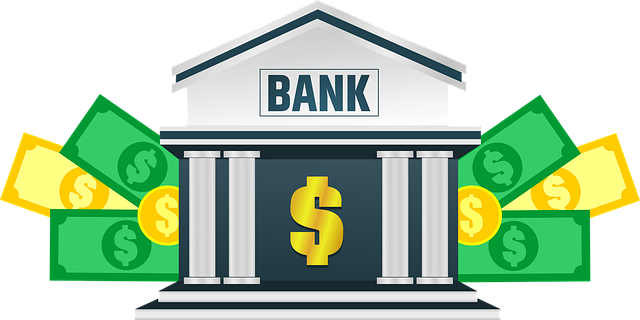Understanding a company's unique business funding needs is crucial for selecting suitable loan options. Businesses should consider traditional bank loans, peer-to-peer (P2P) lending, online lenders, and government-backed loans based on specific requirements. High-interest loans can be beneficial for short-term needs but must be evaluated carefully. Effective loan management involves reviewing terms, creating a budget, avoiding late fees, and considering refinancing or consolidation.
In the dynamic landscape of business, understanding one’s funding needs is paramount. Whether it’s expansion, equipment upgrades, or capital for working capital, choosing the right loan option can make or break a venture. This comprehensive guide delves into various loan types, from traditional bank loans to innovative peer-to-peer and online platforms, offering insights on their pros and cons. By exploring government-backed options and even high-interest loans strategically, businesses can navigate their funding journey with confidence, implementing effective management strategies for optimal repayment.
- Understanding Business Funding Needs
- Exploring Traditional Bank Loans: Advantages and Disadvantages
- Alternative Lending Options: Peer-to-Peer and Online Lenders
- Government-Backed Loans: A Comprehensive Overview
- Considering High-Interest Loans: When and Why
- Strategies for Effective Loan Management and Repayment
Understanding Business Funding Needs

Understanding a company’s unique funding needs is the first step in navigating various loan options. Every business, regardless of size or industry, has distinct requirements for capital injection. Some may seek short-term liquidity to cover operational expenses during lean periods, while others require substantial investments for expansion and growth. Identifying these needs is crucial as it determines the suitable type of loan—whether it’s a traditional bank loan, alternative financing options, or a mix of both.
Businesses should carefully consider their funding goals, repayment capabilities, and long-term strategies when evaluating different loan types. By matching the right financial instrument with specific business funding needs, companies can ensure they secure the most advantageous terms, fostering sustainable growth and profitability.
Exploring Traditional Bank Loans: Advantages and Disadvantages

Traditional bank loans have long been a go-to option for individuals and businesses seeking funding. They offer several advantages, such as competitive interest rates, fixed repayment terms, and the security of borrowing from established financial institutions. These loans are easily accessible, with many banks providing online application processes, making it convenient for borrowers to apply and receive funds quickly.
However, there are also disadvantages to consider. Bank loans often require collateral, which can be a significant barrier for those without substantial assets. Interest rates can vary widely between lenders, and some may come with hidden fees or penalties for early repayment. Additionally, the approval process can be time-consuming, involving extensive documentation and credit checks, which might not align with the urgent business funding needs of entrepreneurs or small businesses.
Alternative Lending Options: Peer-to-Peer and Online Lenders

In today’s digital age, businesses have access to a wide array of loan options beyond traditional banks. Peer-to-peer (P2P) lending and online lenders are emerging as popular alternatives for business funding needs. P2P platforms connect borrowers directly with individual investors or lenders, eliminating the middleman. This approach can offer lower interest rates and more flexible terms compared to conventional loans. Online lenders, often specialized in certain business sectors, provide quick approval processes and digital documentation, making it convenient for entrepreneurs to access capital swiftly.
While these alternative lending options are gaining traction, there are considerations. P2P borrowing involves dealing with multiple individual lenders, which may lead to varying interest rates and repayment terms. Online lenders might have stringent eligibility criteria and charge hidden fees. Businesses seeking funding through these channels should thoroughly research the lender’s reputation, terms, and conditions to ensure a suitable match for their specific business funding needs.
Government-Backed Loans: A Comprehensive Overview

Government-backed loans are a popular choice for individuals and businesses seeking funding, offering a range of benefits to support various financial requirements. These loans are insured or guaranteed by a government agency, which reduces the risk for lenders, allowing them to offer competitive terms and rates. This type of financing is especially attractive for small businesses and startups as it provides access to capital without some of the stringent criteria associated with traditional bank loans.
For business funding needs, these loans can be tailored to support specific goals, such as purchasing equipment, hiring staff, or expanding operations. The U.S., for instance, offers programs like the Federal Direct Loan (FDL) and Small Business Administration (SBA) loans, which are widely utilized by entrepreneurs due to their flexibility and favorable conditions. Government-backed loans often have lower interest rates, flexible repayment terms, and may even offer forgiveness programs under certain circumstances, making them an appealing option for those looking to manage cash flow effectively while growing their business.
Considering High-Interest Loans: When and Why

When considering business funding needs, high-interest loans should be evaluated with care. While they can provide quick access to capital, the elevated interest rates significantly increase the overall cost of borrowing. These loans are often a last resort for businesses facing urgent cash flow issues or those with poor credit history who struggle to qualify for traditional financing options.
High-interest rates can make repayment challenging, especially if the business expects its financial situation to improve slowly. However, in certain circumstances, such as a short-term need for rapid funding to seize an opportunity or stabilize during a transitional phase, these loans might be justified. Businesses should thoroughly assess their ability to repay and weigh the potential benefits against the burden of high interest before opting for this option.
Strategies for Effective Loan Management and Repayment

Managing loans effectively is a critical skill for individuals and businesses alike, especially when it comes to meeting funding needs. A strategic approach to loan repayment begins with understanding the full scope of one’s financial obligations. This involves thoroughly reviewing the terms of the loan, including interest rates, repayment schedules, and any associated fees. By breaking down these details, borrowers can create a comprehensive budget that allocates funds towards debt repayment while considering other essential expenses.
Regularly updating and adhering to this budget is key. Automation of loan payments where possible ensures timely repayments, avoiding late fees and potential damage to one’s credit score. Additionally, exploring options like refinancing or consolidating loans might be beneficial, especially if market conditions change or if multiple smaller loans exist, offering a chance to simplify repayment processes and potentially reduce overall interest costs.






